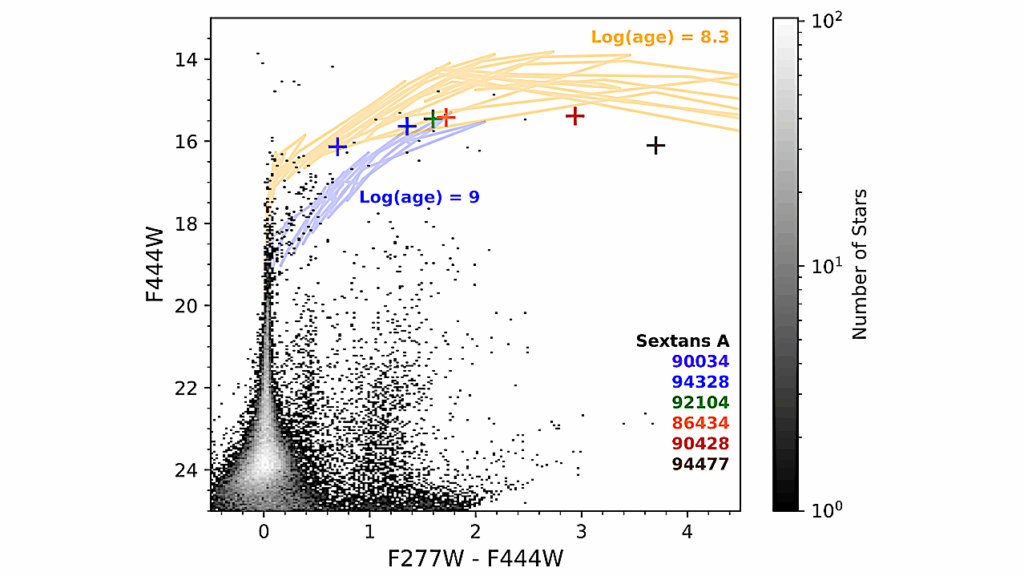Radiation-induced D/H Exchange Rate Constants in Aliphatics Embedded in Water Ice

Gas-phase and solid-state chemistry in low-temperature interstellar clouds and cores leads to a D/H enhancement in interstellar ices, which is eventually inherited by comets, meteorites, and even planetary satellites.
Hence, the D/ H ratio has been widely used as a tracer for the origins of extraterrestrial chemistry. However, the D/H ratio can also be influenced by cosmic rays, which are ubiquitous and can penetrate even dense interstellar molecular cores. The effects of such high-energy radiation on deuterium fractionation have not been studied in a quantitative manner. In this study, we present rate constants for radiation-induced D-to-H exchange for fully deuterated small (1-2 C) hydrocarbons embedded in H2O ice at 20 K and H-to-D exchange for the protiated forms of these molecules in D2O ice at 20 K.
We observed larger rate constants for H-to-D exchange in the D2O ice versus D-to-H exchange in H2O ice, which we have attributed to the greater bond strength of C-D versus C-H. We find that the H-to-D exchange rate constants are smaller for protiated methane than ethane, in agreement with bond energies from the literature. We are unable to obtain rate constants for the unsaturated and reactive hydrocarbons ethylene and acetylene. Interpretation of the rate constants suggest that D/H exchange products are formed in abundance alongside radiolysis products. We discuss how our quantitative and qualitative data can be used to interpret the D/ H ratios of aliphatic compounds observed throughout space.
Danna Qasim, Reggie L. Hudson, Christopher K. Materese
Subjects: Astrophysics of Galaxies (astro-ph.GA); Earth and Planetary Astrophysics (astro-ph.EP); Solar and Stellar Astrophysics (astro-ph.SR)
Cite as: arXiv:2204.13212 [astro-ph.GA] (or arXiv:2204.13212v1 [astro-ph.GA] for this version)
Journal reference: The Astrophysical Journal, April 2022
Related DOI:
https://doi.org/10.3847/1538-4357/ac602b
Focus to learn more
Submission history
From: Danna Qasim
[v1] Wed, 27 Apr 2022 22:01:57 UTC (492 KB)
https://arxiv.org/abs/2204.13212
Astrobiology, Astrochemistry,








